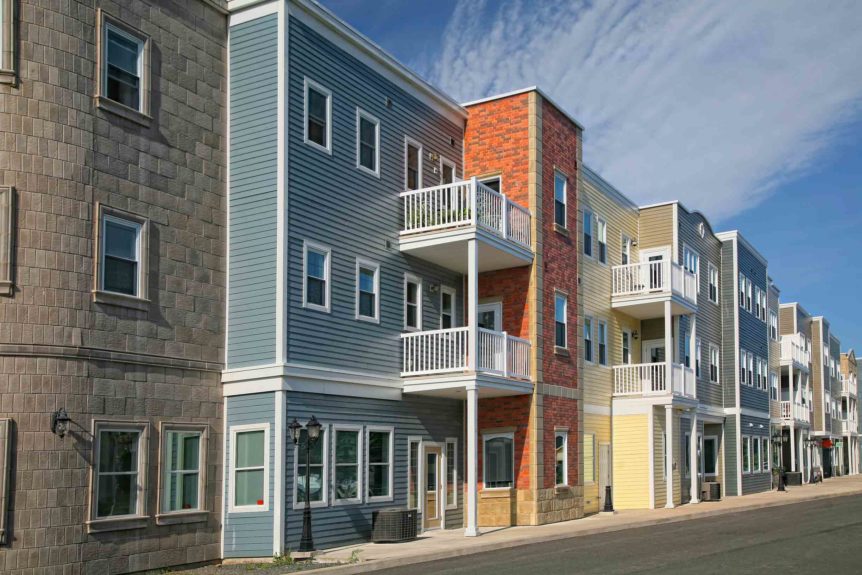Census data shows that nearly 60% of multifamily (MF) properties were built before 1980, and more than half of MF rental units available are at least 50 years old. These aging properties are inefficient and often in need of significant rehab.
A National Resource Defense Council study estimated $6.5 billion of net benefit (after accounting for costs) is achievable by implementing green retrofits in MF affordable housing across nine states. Scaling retrofits nationally and achieving higher efficiency standards for MF properties could be a game changer.
Retrofits would provide billions in utilities savings and significantly impacts the living standards of MF tenants by making housing safer, more comfortable, and healthier. Retrofits also make housing affordable by reducing O&M costs, and help address the climate crisis by reducing fossil fuel consumption. Despite these benefits of green rehab, the MF market remains underserved due to the unique nature of a MF property being a commercial building for residential use.
Barriers to Green Rehab in Multifamily Properties
Split Incentives
While MF owners usually pay for water use and utilities in common spaces, it is the tenants who pay the utility bills for their apartments. So, owners lack the incentive to invest in efficiency, because they do not benefit from the utility savings.
Lack of Knowledge and Resources at Ownership Level
Green rehabs require property assessments, hiring design and engineering teams, figuring out financing, overseeing selection of contractors and construction management, and other tasks that owners don’t have the time, resources, or know-how to undertake. Below is a typical process-flow for a green rehab project:

So when capital improvements are needed, MF owners typically seek the lowest cost, fastest solutions to bring their property back to full capacity. By hiring contractors who do not specialize in green upgrades, owners miss the chance to be made aware of the benefits including financial incentives available for green upgrades.
Small Project Size: High Transaction Costs and Lack of Volume Efficiency
In comparison to a new MF construction project or a total gut rehab, the green upgrades are rather small projects but generate similar transaction costs. Most contractors prefer to work on a large project where transaction costs are a smaller percent of the total project costs. Also, larger projects allow for volume efficiency, which lower costs. Many contractors are unable to create efficient and sustainable services for smaller projects.
Financing Challenges
Financing a green rehab for an older property has many unique challenges. A typical green rehab is a small transaction on a property with an existing mortgage, making a 2nd position lien the best available option for financing. Banks and Credit Unions will not finance a project if they are not provided a first lien position. In addition, traditional financial institutions do not like to fund small projects due to high transaction costs. Also, most financial institutions do not recognize the associated utility cost savings from a green rehab as a new income source for the repayment of the debt on the property; so they are unwilling to lend based on the benefits of a green rehab.
Lack of Control over Tenant Behavior
Installing the most efficient solutions won’t help if tenants leave windows open, lights on, or taps running. Lack of ability to control tenant behavior prohibits many owners from undertaking green rehab.
Opportunity Costs from Free or “Low Hanging Fruit” Programs
To combat the hurdles mentioned above, two primary green rehab programs have emerged to incentivize MF owners:
- Weatherization Assistance Program (WAP) provides grant funds from the Department of Energy and State Agencies for green upgrades to MF affordable housing. With dwindling government funds, MF owners have a long wait to obtain WAP grants.
- Direct Install (DI) programs use funds from utility companies to provide free or highly subsidized solutions that are usually limited to the ‘low-hanging fruit,’ i.e. low-cost, high saving measures such as low-flow devices, CFL or LED lights, pipe wraps, etc. These green upgrades are inexpensive and have a high return on investment for the utility, but provide less than 5% in utility savings for the properties.
Because these programs are heavily subsidized, owners often come to think that green upgrades should always be low-cost or free. And since these programs don’t cover more extensive retrofits such as heating and cooling systems, appliances, windows and other shell improvements, property owners miss out on the larger ticket items that typically provide greater savings and other benefits.

